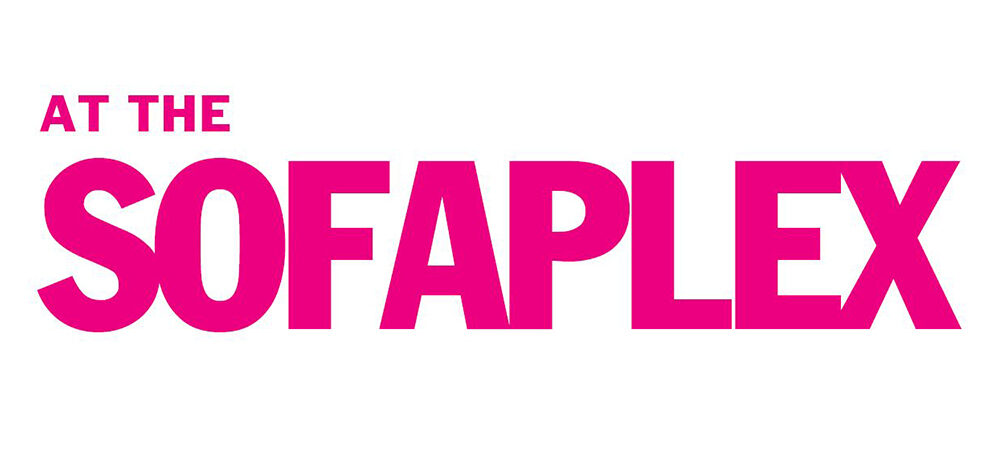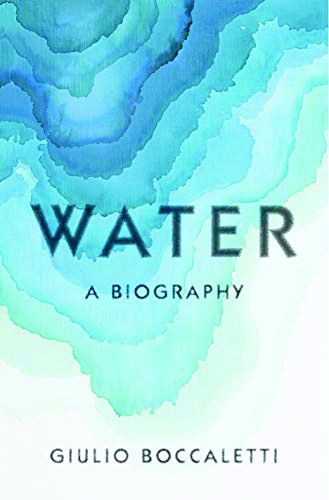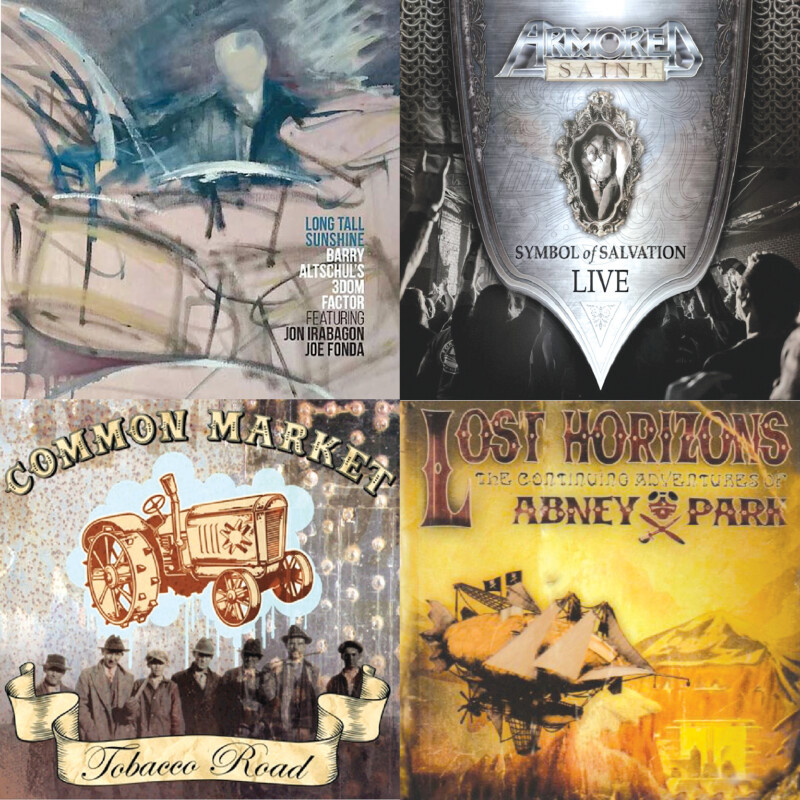Water, A Biography, by Giulio Boccaletti (Pantheon, 300 pages)
Watching muddy brown water flood the streets of Louisiana, Mississippi and New York City, I want to turn to Giulio Boccaletti’s Water, A Biography for an explanation of how we suddenly seem on the verge of being extras in that 1995 film Waterworld.
The excess, or lack, of water gets more of its share of headlines these days, so the timing seems right for a serious look of how we got here and where we’re going, told in a compelling narrative that can engage non-scientists.
Unfortunately, Water, a Biography is not that book. It’s a treatise written by an economist and scientist for other economists and scientists, and for their policy-making friends. While it may win awards, Boccaletti’s book will not be attractive to the general public; for that, you’ll want Philip Ball’s H20: A Biography of Water, published in 1999. Boccaletti’s work is encyclopedic, in both scope and presentation.
He begins promisingly, with words that evoke Genesis if written by a physicist told to write a version of “In the beginning” without mentioning God:
“Long before Earth ever formed, the subatomic particles that emerged from the Big Bang’s first instants formed a plasma of hydrogen and helium. Gravity pulled them together in a nuclear fusion that fueled the first stars, the furnaces that forged heavier elements like oxygen. In the proto-stellar material left by the death of those first stars, hydrogen and oxygen reacted. They produced water.”
That’s lovely, and Boccaletti goes on to provide a fascinating overview of water throughout space and history: why water exists everywhere in our solar system, what caused ice ages, why a great flood myth is common to cultures all over the world, and why water, in the author’s words, is the “principal greenhouse gas” that wraps the planet like a blanket. He then moves into a history of how access to water played into the change from hunter-gatherer societies to the sedentary agriculture-based communities, and the development of crude dams, canals and irrigation systems.
In these early societies, water also played a role in religious myths. In one story found on tablets in Nineveh, Boccaletti writes, lesser gods were required to maintain the canals. “Eventually the gods, tired of having to do all the work, created man to do the digging for them. In other words, those who wrote [the epic] believed that humans existed for the struggle of managing water.”
He goes on to examine the use and control of water in Egypt, Greece, Italy and China, among other ancient societies. Rome’s system of controlling water was particularly sophisticated. “At the time of Augustus, Rome already had far better infrastructure than most European cities would have until the nineteenth century,” he writes. (In fact, one of those ancient aqueducts is still in use today.)
It’s about here that the book begins to bog down for the reader who may not be overly fascinated by European power struggles over water access throughout the Middle Ages. There is relief in a discussion about what’s known as the Little Ice Age, the period of cooling temperatures that began in the 14th century and saw temperatures fall about 2 degrees below average in Europe for a few centuries. During that time, there were also violent, flooding storms in Denmark, Germany and the Netherlands. “Between 1620 and 1621 the Bosporus froze. Baghdad flooded in 1630. The Arctic pack ice grew enough for Inuits to land kayaks in Scotland. Snowfall, heavier than ever recorded — before or since — lay on the ground for months.”
The cause of the Little Ice Age? Well, no one is sure, just like no one is sure how water came to be on Earth, although there are theories to explain the Little Ice Age, to include volcanic eruptions and sun spots. Regardless, Boccaletti explains, the slight changes in temperature created societal problems to include a “shorter, less reliable growing season,” which led to higher costs of grain and, in some places, famine or malnutrition. “The political crisis of the seventeenth century was inseparable from changes in environmental conditions,” he writes.
As for our current climate, Boccaletti takes it up late in the book and does so carefully, saying it’s too early to predict the extent of the challenges ahead, although “There is a very good chance that [the climate] may change far beyond anything in recent experience, thanks to modernity’s impact on the chemistry of the atmosphere.”
Some countries, however, are better equipped to deal with the changes: “Countries that are rich can manage water better, but it is often the case that countries are rich because they found a better way of managing water.” China’s Three Gorges Dam, the largest dam in the world, may be one of the most impressive attempts by a society to control water. But Boccaletti argues that it is an illusion that society can protect itself from a variable climate with concrete. “The question, once again, is what will happen when — not if — that illusion is shattered.” And for that, he has no answers, or has saved them for another book. B-
Book Notes
In the aftermath of deadly flash floods in New York and New Jersey, The New York Times amused some of its readers by publishing a guide to packing a “go bag” and “stay bin” in order to be prepared for emergencies.
Such information is readily available, even on government websites, but the old gray lady is not usually in the ranks of doomsday preppers, people who are equipped to take on any sort of natural or man-made disaster.
One thing conspicuously absent from Tara Parker-Pope’s list, however, was any sort of book. This is odd because if you’re bugging out to an emergency shelter, bunker or cave, you’ll need something to do when you get there, possibly for a long time. (May I recommend Moby-Dick, The Gulag Archipelago or Les Miserables?)
More importantly, if a doomsday scenario ever occurs, you’re not going to have internet access. So it seems that any sort of survival bag should contain at least one book that teaches you, well, to survive. Enter the newly released 4th edition of The Survival Medicine Guide, by Dr. Joseph Alton and Amy Alton of YouTube survival video fame. It’s billed as “the essential guide for when help is not on the way” and, at nearly 700 pages in paperback, seems to cover everything. Moreover, it’s published by the brilliantly named company Doom and Bloom LLC.
From a legacy publisher, there’s also last year’s The MeatEater Guide to Wilderness Skill and Survival by Steven Rinella (Random House, 464 pages). You may not want to learn how to do everything Rinella teaches, but you definitely want to know someone who did.
And out this week is the paperback version of a 2009 book, Hawke’s Green Beret Survival Manualby Mykel Hawke (Skyhorse, 456 pages). He promises to deliver the information you need on not only medicine and food but also fire, tools, navigation, shelter and “survival psychology.” The publisher promises it’s geared to the untrained civilian, i.e., me.
Finally, one of the best fiction books about surviving a flu pandemic that wipes out much of the human race is Peter Heller’s The Dog Stars (paperback, Vintage, 336 pages). It was published in 2012 but feels alarmingly relevant these days.
Book Events
Author events
• AMY TIMBERLAKE Newbery Honor winning author presents her second Skunk and Badger book, Egg Marks the Spot. Virtual event via Zoom, hosted by Gibson’s Bookstore in Concord. Tues., Sept. 21, 7 p.m. Visit gibsonsbookstore.com or call 224-0562.
• JEFF BENEDICT Author presents The Dynasty. Gibson’s Bookstore, 45 S. Main St., Concord. Wed., Sept. 22, 6 p.m. Visit gibsonsbookstore.com or call 224-0562.
• EMMA PHILBRICK Author presents Arkivestia. Barnes & Noble (1741 S. Willow St., Manchester, barnesandnoble.com). Sat., Sept. 25, 1 p.m.
• DAVID SEDARIS Humor writer presents. Capitol Center for the Arts (44 S. Main St., Concord, ccanh.com), Sun., Sept. 26, 7 p.m. Tickets start at $49.
• DIANNE TOLLIVER Author presents Life Everyone Has a Story. Barnes & Noble (1741 S. Willow St., Manchester, barnesandnoble.com). Sat., Oct. 9, 10 a.m.
Book sales
• MULTI-BOOK AUTHOR SIGNING AND SALE A Freethinker’s Corner(652 A Central Ave., Dover, 343-2437, freethinkerscorner.com), Sat., Sept. 18, noon to 4 p.m.
• MULTI-BOOK CHILDREN’S AUTHOR SIGNING AND SALE A Freethinker’s Corner(652 A Central Ave., Dover, 343-2437, freethinkerscorner.com), Sat., Sept. 25, noon to 4 p.m.
• FRIENDS OF BROOKLINE PUBLIC LIBRARY TWO-DAY BOOK SALE Featuring hardbound and paperback books of all fiction and nonfiction genres, plus CDs, DVDs and audio books, for sale. 4 Main St., Brookline. Saturday, Sept. 25, and Sunday, Sept. 26, 10 a.m. to 2 p.m. Visit brooklinenh.us/brookline-public-library/pages/friends-of-the-brookline-public-library.
Poetry
• DOWN CELLAR POETRY SALON Poetry event series presented by the Poetry Society of New Hampshire. Monthly. First Sunday. Visit poetrysocietynh.wordpress.com.
• SLAM FREE OR DIE Series of open mic nights for poets and spoken-word artists. Stark Tavern, 500 N. Commercial St., Manchester. Weekly. Thursday, doors open and sign-ups beginning at 7 p.m., open mic at 8 p.m. The series also features several poetry slams every month. Events are open to all ages. Cover charge of $3 to $5 at the door, which can be paid with cash or by Venmo. Visit facebook.com/slamfreeordie, e-mail slamfreeordie@gmail.com or call 858-3286.
Book Clubs
• BOOKERY Online. Monthly. Third Thursday, 6 p.m. Bookstore based in Manchester. Visit bookerymht.com/online-book-club or call 836-6600.
• GIBSON’S BOOKSTORE Online, via Zoom. Monthly. First Monday, 5:30 p.m. Bookstore based in Concord. Visit gibsonsbookstore.com/gibsons-book-club-2020-2021 or call 224-0562.
• GOFFSTOWN PUBLIC LIBRARY 2 High St., Goffstown. Monthly. Third Wednesday, 1:30 p.m. Call 497-2102, email elizabethw@goffstownlibrary.com or visit goffstownlibrary.com
• BELKNAP MILL Online. Monthly. Last Wednesday, 6 p.m. Based in Laconia. Email bookclub@belknapmill.org.
• NASHUA PUBLIC LIBRARY Online. Monthly. Second Friday, 3 p.m. Call 589-4611, email information@nashualibrary.org or visit nashualibrary.org.






